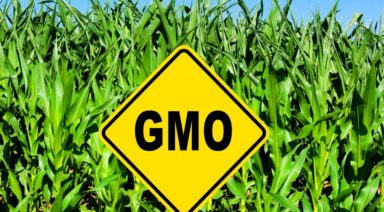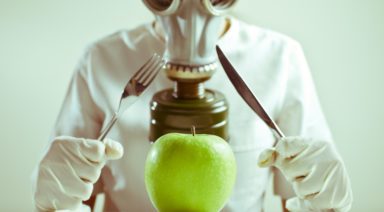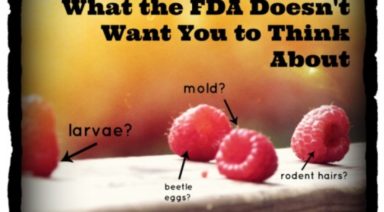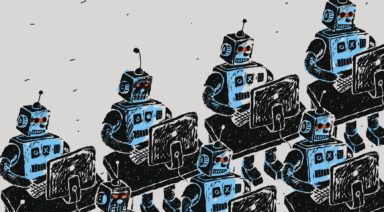Antibiotic Resistance is Becoming a Major Threat to Humanity

As humans, we face a number of threats from the environment, but none may loom larger than the one posed by antibiotic resistance. Through our over prescription, poor regulation, agricultural abuse, and weak supply chains, a hyper-resistant bacteria is just around the corner. And unless we do something to change the tide, we may be looking at a pandemic of mass proportion.
Human presence on earth is a blip on the timeline compared to bacteria. And bacteria are pervasive; on our clothes, in our bodies, in dirt, and on the surface of pretty much everything – in fact, all of the bacteria on Earth, despite its microscopic size, would outweigh us 100 million times.
In the 3.5 billion years bacteria have lived on Earth, it has survived interminable challenges to its existence, which has only given it time to continuously adapt and outlast every other lifeform. Not to mention the fact that bacteria can reproduce 500,000 times faster than we can, with certain strains giving rise to a billion offspring within several hours.
Now that we’ve made it our mission to maintain sterile environments and avoid illness, we’ve been combating bacteria with chemicals and antibiotics every chance we get. Antimicrobials are used in everything from hand soap, to skin wipes, to yoga mats and kitchen towels, creating what can only be described as a Darwinian battleground, where only the strongest bacteria survive.
The Overuse of Antibiotics
Antibiotics were discovered during WWII, and prior to it’s discovery thousands of soldiers died from infection. When it became evident that antibiotics could easily cure bacterial disease, they became an instant panacea. But they weren’t used with a calculated strategy. Instead they were given as prophylactics, starting a dangerous trend of over-prescription.
Soon, the miracle drug known as penicillin was being prescribed by every doctor, whether there were only marginal chances an illness was caused by bacteria or not. And today that practice continues as doctors, who treat individuals, not society at large, would rather take the risk of over prescribing than having a patient get ill. It’s estimated that a third of all antibiotics are prescribed inappropriately, either when no bacterial infection is present, or the wrong antibiotic is recommended.
In 1945, the founder of penicillin, Alexander Fleming, warned the New York Times that doctors over prescribing the drug posed a serious threat to its efficacy. Though it wasn’t until the 70s that the FDA realized the potential fallout of antibiotic resistance.
By this point antibiotics were being used not just for humans, but almost universally for livestock as well. Farmers found they could raise animals in smaller, dirtier conditions if they staved off illness by incorporating antibiotics into their diet. And for some reason, still unknown to this day, a diet supplemented with antibiotics allows animals to grow slightly faster, producing more meat and subsequently more profit.
Today approximately 80 percent of all antibiotics in the U.S. are given to livestock, with the majority administered to healthy animals. This has created a vicious cycle in which farmers rely on the use of antibiotics to earn thin profit margins that would be eliminated if laws were enacted to restrict their use. Meanwhile, we’re eating the meat of these animals pumped with antibiotics, causing unknown health effects to us, while simultaneously promoting the growth of resistant bacterial strains.
Watch a trailer for the documentary, Resistance:
Antibiotic Resistance Causes: A Lack of Regulation
According to a 2016 World Economic Forum study, around 700,000 people die annually from antimicrobial resistance. That death toll will reach a total of 10 million by the year 2050.
So, why has the use of antibiotics been unregulated for so long? One answer is the rise in confinement agriculture, which put small farmers out of business and corporate agriculture at the forefront of meat production.
By the time the FDA realized the impending threat posed by antibiotic resistance and abuse, its widespread use was already ingrained in farming practices. The FDA proposed a ban for the use of antibiotics in animal feed by 1973, though it never came to fruition. Since then, the drug’s use has continually increased. The FDA merely provided recommendations to farmers to curtail the use of antibiotics, rather than getting legislation passed to mandate it.
So, who is preventing such legislation from being passed? Lobbyists from many industries, including big ag, pharmaceutical companies, and fast food chains relying on large quantities of cheap meat.
Today, there are nine billion animals raised for meat in the U.S. annually, with 90 percent of those animals raised in concentrated animal feeding operations, or CAFOs. These CAFOs, that contribute to a number of public health problems, are often owned by large corporations that pack as many animals into their enclosures as possible, barely maintaining their health with antibiotics.
Since the 1980s, mega-farms have overtaken markets, putting 85 percent of small farmers out of business. They began producing more meat at a faster rate, driving the market price of an animal down, sometimes by more than half. Now that this has become common practice, farmers fear they can’t afford to take a step back and revert to pre-antibiotic farming practices.
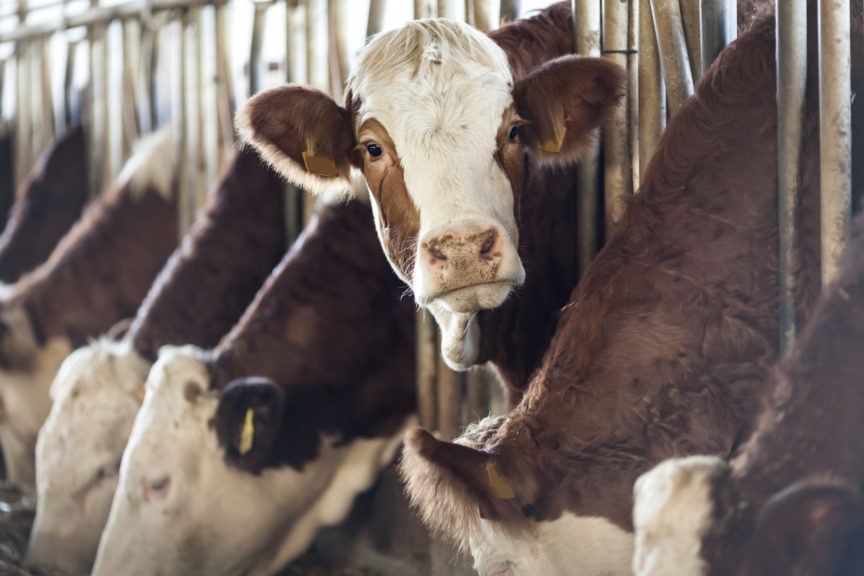
Misuse, Overuse and Refuse
The U.S. healthcare system is flawed, causing many to resort to desperate tactics when in need of medicine. While antibiotics aren’t necessarily expensive compared to other drugs, a trip to the doctor can cost the uninsured hundreds of dollars. To avoid this, people take matters into their own hands to save a buck, contributing to a greater problem and also putting them in a dangerous position.
On the extreme end, people have begun using over-the-counter animal antibiotics from pet stores to treat bacterial issues ranging from infections from wisdom teeth extraction to bronchitis. On the less extreme end, people often save unfinished antibiotics for future illness.
There’s debate as to whether patients should finish a prescription or stop once they start feeling better, but typically the dosage and type of antibiotic are tailored to a specific infection. There are also different strengths of antibiotics that have slowly become ineffective as bacteria have grown resistant. And not finishing a prescription can leave bacteria in your body that can grow stronger.
But even if we take proper dosages and get prescriptions from a doctor, there’s still the problem of waste and antibiotics seeping into the environment from a multitude of sources. Pharmaceutical pollution creates a fecund environment for antimicrobial resistance, and recent events have only perpetuated this.
A few years ago, there was an explosion at a Chinese factory that produced antibiotic precursors. This undoubtedly lead to more pollution, but it also lead to a major gap in the global antibiotic supply chain that relied on a tenuous supply of the drugs. This shortage, particularly of one antibiotic that prevents the spread of syphilis from mother to child, can exacerbate antimicrobial resistance while allowing the spread of disease.
Now that bacteria are evolving to quickly become drug resistant, pharmaceutical companies and their investors have no incentive to finance research into new antibiotics that could become useless within five years. When it costs a billion dollars to bring a new drug to market, there’s no chance our capitalist model will produce them at a loss.
What can we do before it’s too late? Awareness and pressure on the government to pass legislation limiting antibiotic use is key. While it seems hopeful at best, raising awareness can lead to a greater number of people observing best practices that limit resistance.
Pressuring governments, organizations, and private companies to enact policies can lead to change too. Encouraging doctors to prescribe fewer antibiotics, while consuming fewer ourselves, especially those from alternative sources, can slow the process of resistance.
Currently, one company, CARB-X, is working to speed up the development of new drugs that most big pharmaceutical companies won’t consider. The company’s funding is a mix of private and public partners working to find solutions to antimicrobial resistance.
In the E.U., the use of antibiotics in agriculture has been banned, and though there has been a slight decrease in animal growth and a slight increase in animal mortality, overall meat production is higher than when antibiotics were used.
If they can do it, so can the U.S. And though it may seem like something beyond individual control, it can be possible to collectively enact change by starting at the individual level.
The Monsanto Blackwater Connection; Spying on Activists
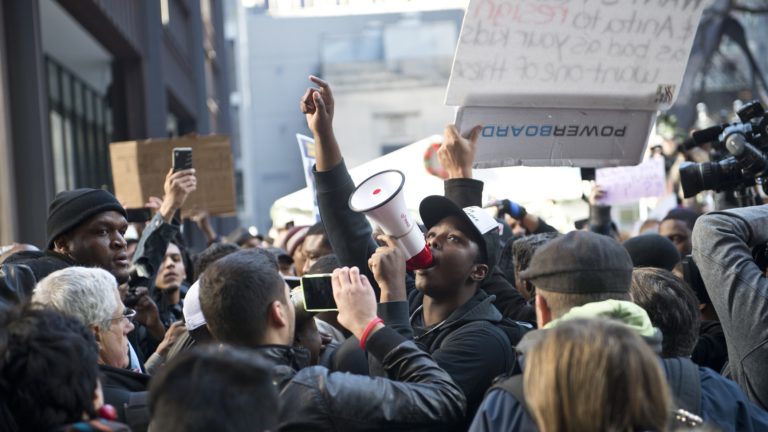
No matter where you stand on genetically modified crops and biological patents, Monsanto indisputably engages in questionable business practices as a multinational corporation. From situating employees in top-level government roles to brokering a deal with Blackwater to infiltrate animal rights activist groups, the history of this biotech giant hints at a nefarious agenda.
The Blackwater Controversy
Throughout the mid to late-aught’s, the private military contractor, Blackwater, became a go-to firm for the CIA, State Department, and Department of Defense for everything from military operations in Iraq to ad-hoc law enforcement during Hurricane Katrina.
Unsurprisingly, Blackwater developed a comfortable relationship with the CIA, through which most of its larger contracts were acquired. It even created a price sheet for CIA services its multinational, private-sector clients might desire, like setting up safe houses anywhere in the world, or having CIA operatives represent your interests in front of national decision makers.
Founded by American businessman and former Navy SEAL, Erik Prince, the company essentially employed modern-day mercenaries – though Prince prefers epithets with less negative connotations. Since he started the company in 1997, it has gone through several name changes due to controversies it found itself embroiled in, including the Nissour Square massacre in 2007, during which Blackwater contractors killed 14 innocent civilians and wounded 17 others.
Today, the firm is known as Academi, it’s third name change in addition to over 30 shell corporations it created to acquire U.S. government contracts after its name was tarnished from employees’ reckless behavior. Many of those contracts were awarded by officials who were unaware they were dealing with Blackwater, adding to the $2 billion in government contracts the company amassed between ’97-’10.
Prince is no longer affiliated with the company, having sold it in 2010 when it started coming under flak for a litany of legal offenses stemming from its operations. Prince moved to the United Arab Emirates, a country with no extradition treaty with the U.S.
The Monsanto-Blackwater Deal
One of the aforementioned CIA operatives was a man named Cofer Black, the former head of the CIA’s counter-terrorism center. In 2008 Black travelled to Zürich to meet Kevin Wilson, security manager for global issues at Monsanto. Black worked as the chairman for the Total Intelligence Consulting Company, which was owned by Blackwater at the time. During his meeting with Wilson, he proposed to make Total Intelligence the “intel arm” of Monsanto.
Monsanto hired Total Intelligence Solutions from 2008-09 under the agreement it would infiltrate animal rights activist groups by having employees become legal members. It also promised to monitor activists’ blogs and websites on Monsanto’s behalf.
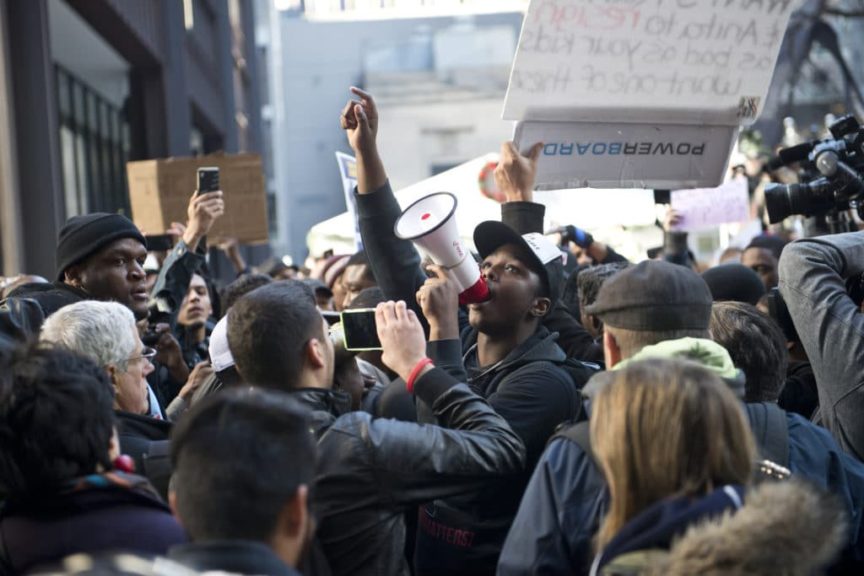
The story originally came about through the reporting of Jeremy Scahill, a writer for The Nation, who has written extensively about the shady operations of Blackwater and its subsidiaries.
Though Wilson claimed he was told Total Intelligence and Blackwater were completely separate entities, Scahill noticed an email was sent after their meeting to Prince discussing the use of Blackwater operatives in infiltrating animal rights activist groups.
A History of Monsanto Government Ties
Monsanto’s infiltration outside of the private sector has been most obvious in Michael R. Taylor’s back-and-forth employment between the big agriculture industry’s public and private sector. Taylor began his career working for a corporate law firm that represented Monsanto, before being hired as policy chief for the FDA in the early ’90s. Taylor was later hired directly by Monsanto as its vice president of public policy, before being tapped again to lead the FDA in 2009.
During his initial tenure in the FDA, Taylor green-lit the approval of GMOs and recombinant bovine growth hormone, or rBGH. Aside from the fact that the approval of these two nascent biotechnologies was lucrative for Monsanto, he didn’t require producers to label food products containing GMOs.
Taylor also allowed for food producers to initially regulate themselves and argued against the Delaney Clause, which prohibited substances that were known carcinogens from being used as food additives.
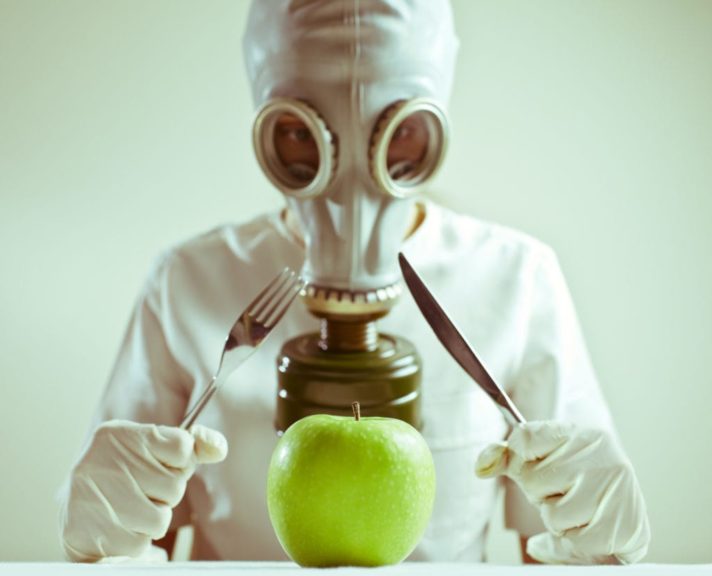
When Taylor first crafted his regulations on GMOs, the policy treated GM foods the same as food additives, in which the producer was allowed to determine whether it was “generally recognized as safe,” GRAS, or not GRAS. Though this system had already existed, Taylor eased the regulations surrounding information that farmers could rely in using new technologies. This allowed farmers to rely on unpublished studies and information in determining the GRAS standard, as opposed to those publisehd in scientific journals.
After his initial stint at the FDA, Taylor moved on to the USDA, then to Monsanto, then back to the FDA, where he currently sits as the Deputy Commissioner for Foods.
Taylor isn’t the only former Monsanto employee who would later go on to work in government. In fact, former employees have worked at the State Department, Department of Defense, Supreme Court, EPA, Social Security Administration, and Department of Commerce.
In addition to these mostly appointed positions, Monsanto has a long history of lobbying and donating to political campaigns across all levels of government and on both sides of the aisle. Over the past few decades the company has spent millions on lobbying, PACs, and individual campaign contributions.
Is Monsanto Really That Bad?
The company faced a number of lawsuits from its products and policies from disparate parts of the world, stemming from GM crops not producing the promised higher yields, negative health effects from GM foods, and entire countries banning Monsanto products.
The fact that nearly 40 countries in the world have banned or restricted GMO crops should raise a red flag for anyone on the fence about biotech products.
There is a lot of conflicting information about whether GM foods are safe or dangerous, but the historical lack of regulation and safety testing is a concern. We’re not quite at the point of being able to test the long-term effects of consuming GM foods, considering they’ve technically only been around for 30 years or so. However, rising negative trends can be correlated with the introduction of GMOs.
And when a toxin used as an insecticide is found in the blood stream of pregnant mothers and their babies, there’s cause for concern.
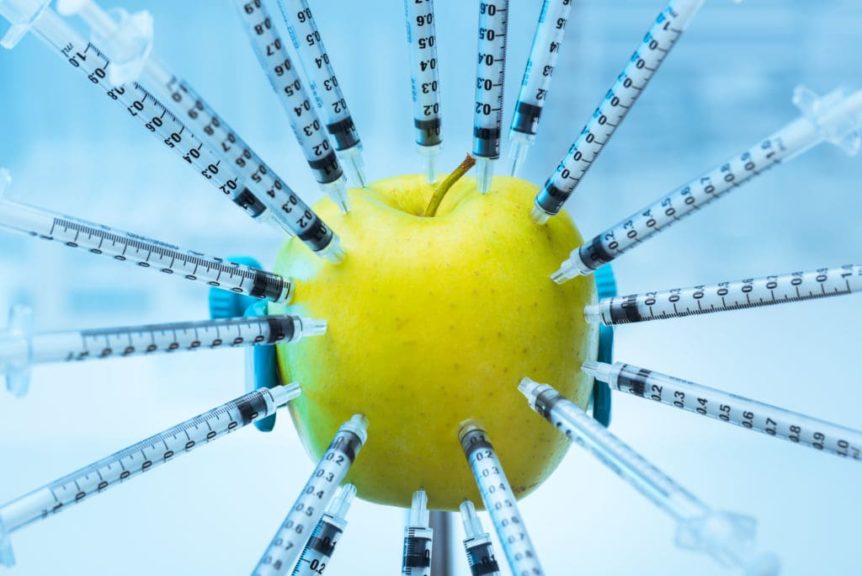
Monsanto has become known for having a militaristic grip on its patents, threatening customers who don’t ascribe to their strict legal clauses with mafia-style intimidation tactics. Their investigators will show their targets photos that let them know they’re being watched or followed, in addition to the constant threats. The company even has an 800 number to pit farmers against one other, encouraging them to call each other out for replanting their seeds.
The company is not hesitant to take farmers to court who disobey or don’t understand the company’s restrictions on replanting seeds. And Monsanto’s investigative legal team casts a big net when finding farmers to prosecute. The company has even taken farmers to court who unintentionally grew GM crops when the wind blew Monsanto seeds into their fields.
In Missouri, a Monsanto investigator walked into a man’s small country store, accusing him of violating Monsanto’s policy of replanting seeds. The agent threatened the man with a major lawsuit, promising him he wouldn’t be able to beat Monsanto’s team of lawyers. The man wasn’t even a farmer, but it wasn’t until he hired a lawyer and fought the company in court that they realized they had the wrong guy. He was never given an apology or reimbursed for lawyer’s fees.
This unapologetic, hawkish attitude seems to be a recurring theme in the company’s litigation strategy. If they don’t get their way with customers whom they believe to be in violation, but don’t have a strong case against, Monsanto’s lawyers will pull them into a legal battle so drawn out, the accused farmer or co-op can’t afford to continue fighting and will eventually have to acquiesce.
Avoiding Monsanto and GMOs
Last year the federal government passed a law mandating that GMO foods be labelled, much to the chagrin of certain members of Congress who tried to prevent its passage. This was likely due to the multitude of campaign contributions these members received from Monsanto and big agricultural corporations.
The movement initially started when Vermont passed a law that demanded food manufacturers label GM foods. This forced larger companies to label all of their products that contained GMOs because it would be too costly to produce an entire distribution line specifically for one state.
Though 70 percent of food products in North America contain GMOs, it’s still possible to avoid them. Anything that is labelled USDA organic, 100% organic, or certified organic is by definition GMO-free. There are other labels, like the Non-GMO project that can guide consumers away from GM foods.
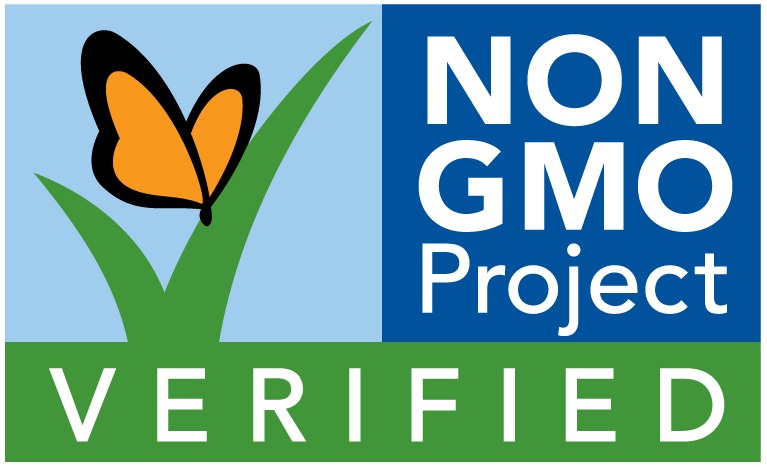
nongmoproject.org
Specific foods that are common GM crops include sugar beets, soy, and corn, but these are often used as additives in many different food products, so looking out for these in listed ingredients can help you identify which foods contain genetically modified material.
The demand in Vermont started as a grassroots movement that inevitably created much larger waves than most expected. Movements like these that may appear to be small can force the larger hands at play to bow to consumer demands. And whether one believes GMOs are dangerous or not, when it comes to our food supply and the future of food, large corporations shouldn’t have the final word in our essential sustenance.



